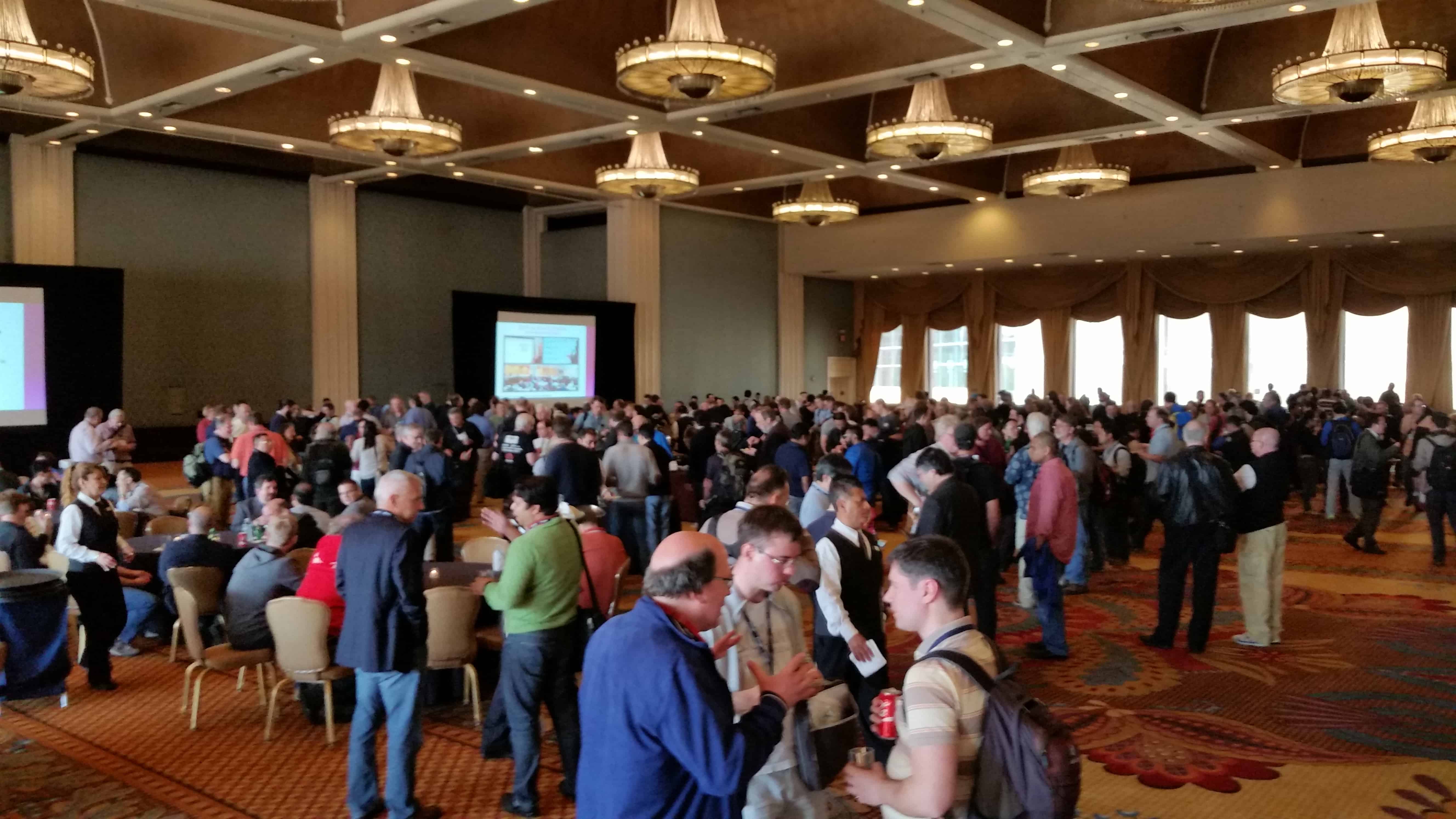Late last month I attended the 92nd meeting of the IETF, the Internet Engineering Task Force. For those unfamiliar, the IETF is an international community of network designers, operators, vendors, and researchers. It’s open to any interested individual, and most of its work is conducted over the Internet. The mission of the IETF is to: “Make the Internet work better by producing high quality, relevant technical documents that influence the way people design, use, and manage the Internet.”
In short “the IETF is the principal body engaged in the development of new Internet standard specifications.” It’s the place where most of the technologies that support the New IP have been, or will be standardized. The standardization process of rough consensus and running code is often longer and messier than we might hope. This standardization though is what ultimately leads to the kind of interoperable software, hardware, and networks that make up the modern Internet, and are now evolving into the New IP. An Internet without standards is no Internet at all. Rather it would be just a set of silo’d networks running proprietary technologies.
Lucky for all of us, the IETF does exist. Even better, its ethos contains open participation, freely available work, technical merit, and voluntary deployment. This open, transparent, bottom-up, consensus driven methodology permeates the entire Internet ecosystem. It also means that anyone with a good idea can have an impact on the future of the Internet, a hand in defining the New IP. Knowing what’s currently being worked on is the first step to making that impact, so let’s take a look:
One of the highlights from IETF 92 for me was the technical plenary on Monday, 23 March 2015. Two presentations, and the resulting discussions, are worth reviewing.
The first covered the recently published RFC 7452 “Architectural Considerations in Smart Object Networking.” As the abstract states: “This document offers guidance to engineers designing Internet-connected smart objects.” In other words, it’s a primer for folks working on the Internet of Things (IoT). It contains a solid taxonomy of smart-object communication patterns, an earnest look at the tradeoffs to using IP in smart-objects, and a great list of privacy and security considerations. Some related IETF working groups include 6LO, 6TiSCH, ACE, CORE, DICE, LWIG, and ROLL.
The second presentation of interest was a report on the IAB Workshop on Stack Evolution in a Middlebox Internet (SEMI). This workshop was held to help address ‘ossification’ in the current Internet. “The Internet’s transport layer has ossified, squeezed between narrow interfaces (from BSD sockets to pseudo-transport over HTTPS) and increasing in-network modification of traffic by middleboxes that make assumptions about the protocols running through them. This ossification makes it difficult to innovate in the transport layer, through the deployment of new protocols or the extension of existing ones. At the same time, emerging applications require functionality that existing protocols can provide only inefficiently, if at all.” In other words, how do we enable the New IP on the existing infrastructure? Folks interested in this topic should check out the HOPS, SPUD, or StackEvo mailing lists, or the TAPS working group.
Of course the technical plenary only makes up a small portion of the IETF meeting. The vast majority of the week is spent in working group meetings. There is far too much work going on in the IETF to cover every working group here, or even provide a recap of just a few WG meetings. Instead I’ll point you to a few more WGs that I think are critical to enabling the New IP.
On the operational side, v6ops, dnsop, and opsec are all currently on my radar. V6ops or IPv6 Operations is the WG working on ironing out all of the final wrinkles discovered in the substrate of the New IP as more and more networks enable IPv6. Dnsop or Domain Name System Operations is particularly interesting lately due to their work on DNS Security (DNSSEC). Opsec or Operational Security Capabilities for IP Network Infrastructure is a personal favorite of mine because they call out many current network security issues and then seek to document solutions and best practices.
A couple more security related WGs are worth watching right now: dane and uta. Dane or DNS-based Authentication of Named Entities is fundamentally an extension to DNSSEC that allows applications to establish cryptographically secured communications. The uta or Using TLS in Applications WG is focused on making it easier for application developers to use TLS (formerly SSL) to authenticate and encrypt Internet communications.
There is a ton more going on in the IETF and you don’t even have to show up at meetings to participate. The overwhelming majority of the IETF’s work is done and all official decisions are made online. All you have to do to get started is find a working group of interest, join the mailing list, and start contributing!
This post also appears, edited, on The New IP.






